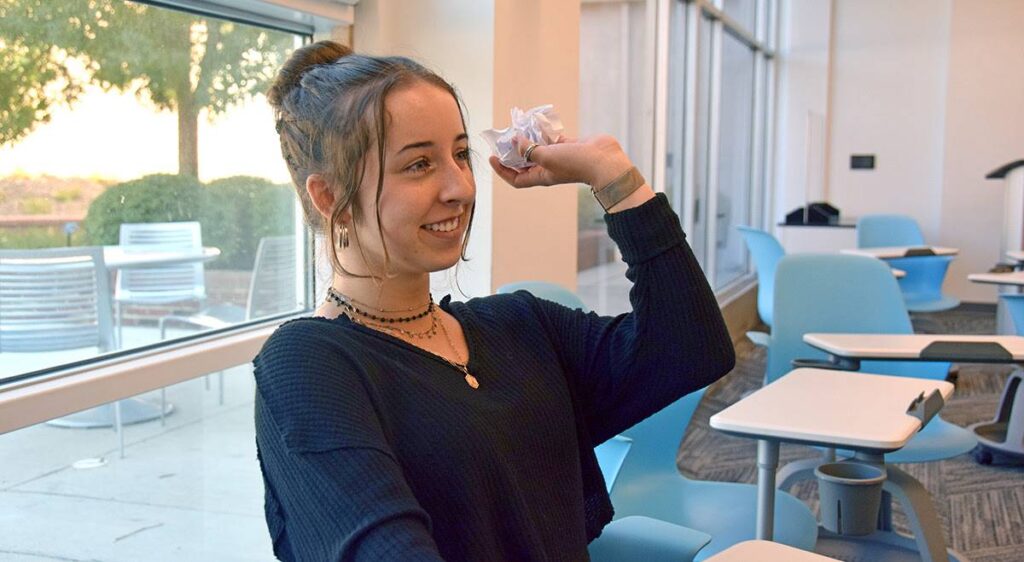The next time you feel your students disengage during a lecture, Leah Carmichael, Director of Active Learning at UGA, has suggestions for three active learning strategies that require no forethought.
Crowd-Crumple
Who doesn’t like the idea of throwing paper in a classroom? A crowd crumple is an activity that begins when each student writes something down on a piece of paper. Most often, when I use this, I ask students to write a question they have from the material we covered in class that day.
For the fun part, they get to ball up the piece of paper and chuck it across the room toward another student. The student that catches the ball of paper uncrumples it and helps to answer the question posed as best as possible.
Instructors can choose to have multiple throws where subsequent students add answers to the question posed before sharing some of the questions and answers aloud in the class.
It’s a fun activity. And the person asking the question can get answers from peers without having to ask the question aloud.
Think – Pair – Share
Think-Pair-Share is the simplest of activities that can be used in every classroom on campus.
First, you start by posing a question to your class. If it’s a class on a classic novel, as your students “Why was the character driven to act this way?” If it is a Math course, put a problem on the board.
Next, the instructor gives students a few minutes to think of an answer to the question (and ideally write it down).
The third step is to invite students to turn to the person sitting next to them and discuss their answers. As students explain their reasoning to a peer, they are engaging more fully with the material and considering how best to communicate their thoughts to one another. This likely means they are engaging more deeply with the content than if they simply jotted the answer down without discussing it.
The final step is to ask partners to share their insights with the class. You can ask someone to summarize their partner’s answer, discuss any similarities the partners had, or even ask students to explain something their partner said that they had not yet considered. By allowing stuydents time to consider their answers individually and in a pair, students feel more confident sharing their insights with the class.
Minute Papers
Sometimes less is more. When it comes to lecturing, instructors often feel they need to use every last minute of class to cover information. However, without meaningful periods of reflection, students may not have time to integrate the new information presented with their preexisting knowledge on the topic. One of the easiest no-prep active learning activities is the Minute Paper. As the name suggests, the instructor stops class early (though it is called a minute paper, I would recommend 2-3 minutes) to ask students to reflect on the material covered. The question can be as simple as, “What was the most important thing you learned during this class?” and “What important questions remain unanswered?” If you take attendance or grade participation, a minute paper can be used for these purposes as well.

